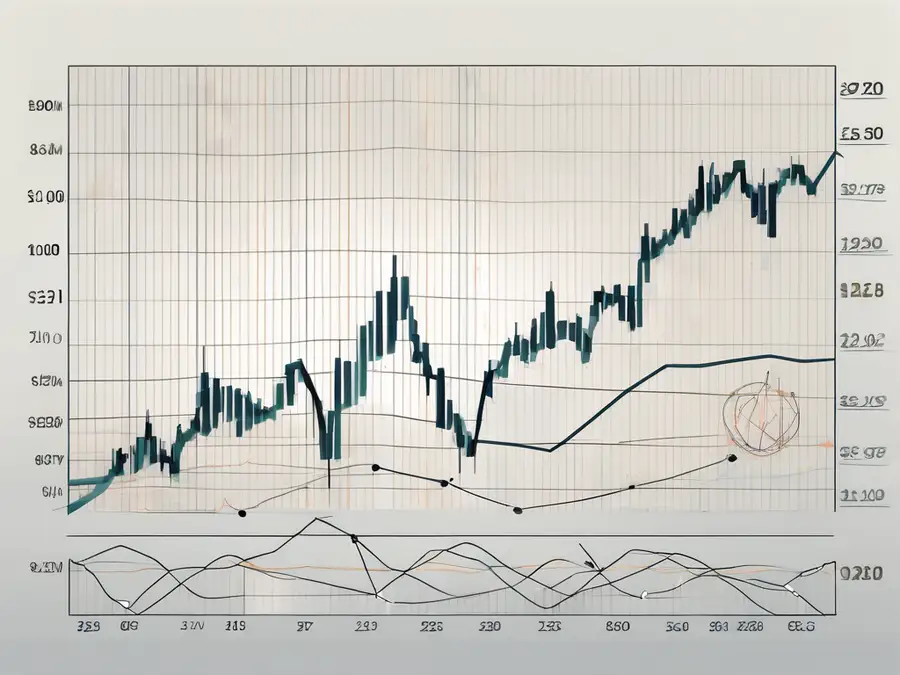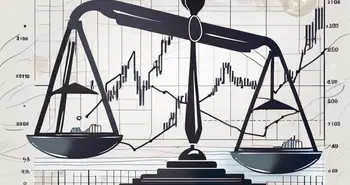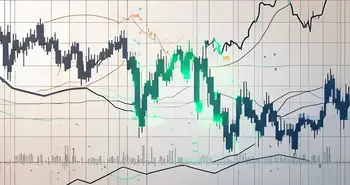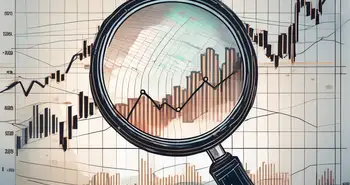The Power of Momentum in Forex Trading

Forex trading, with its fast-paced environment and endless possibilities, can be an exhilarating venture. To navigate this world successfully, understanding the concept of momentum is crucial. Momentum is not just a buzz word, but a powerful tool that can significantly impact your trading decisions. In this article, we will delve deep into the world of momentum in forex trading, exploring its definition, importance, and how it can be harnessed to enhance your trading strategies.
Understanding the Concept of Momentum in Forex Trading
Defining Momentum in Forex:
Momentum, in the context of forex trading, refers to the strength and persistence of a price trend. It reflects the velocity at which a currency pair's price is changing over a specific period. In simpler terms, it measures the eagerness of buyers or sellers in the market.
The concept of momentum can be likened to a snowball rolling down a hill, gaining speed and size as it moves. Similarly, in forex trading, when a currency pair's price shows strong momentum, it indicates a high likelihood of the trend continuing in the same direction. Traders often use momentum indicators such as the Relative Strength Index (RSI) or Moving Average Convergence Divergence (MACD) to quantify and visualize this phenomenon.
The Importance of Momentum in Trading:
Momentum is a vital force driving market movements. It reveals the psychology behind buying and selling decisions, helping traders identify trends, reversals, and potential entry and exit points. By understanding and utilizing momentum indicators effectively, traders can gain valuable insights into market behavior and make informed trading decisions.
Furthermore, momentum trading strategies are popular among traders seeking to capitalize on short to medium-term price movements. These strategies involve entering trades based on the strength of a price trend, with the expectation that the momentum will continue for a certain period. However, it is essential for traders to exercise caution, as momentum can shift quickly, leading to sudden reversals in price direction. Successful momentum trading requires a combination of technical analysis, risk management, and a deep understanding of market dynamics.
The Role of Momentum Indicators in Forex Trading
Types of Momentum Indicators:
There are various momentum indicators available to forex traders, each offering unique insights into market dynamics. Some common examples include Moving Average Convergence Divergence (MACD), Relative Strength Index (RSI), and Stochastic Oscillator. These indicators use complex algorithms to analyze price data and generate signals that traders can use to identify potential opportunities.
When it comes to momentum indicators, traders often look for divergences between the indicator and price movements to spot potential trend reversals. For example, if the price of a currency pair is making new highs, but the RSI indicator fails to confirm these highs and instead shows lower highs, it could signal a weakening trend. Understanding how to interpret these divergences can provide traders with a valuable edge in the market.
How to Use Momentum Indicators Effectively:
While momentum indicators provide valuable information, it is essential to use them in conjunction with other technical analysis tools. Avoid relying solely on a single indicator, and instead, combine them with support and resistance levels, trend lines, or candlestick patterns to increase the accuracy of your analysis. Remember that no indicator is foolproof, and it is essential to consider multiple factors before making trading decisions.
Moreover, traders should be aware of the different timeframes on which momentum indicators can be applied. Short-term traders may prefer using fast-paced indicators like the Stochastic Oscillator for quick signals, while long-term investors might rely more on slower indicators such as the MACD for a broader view of market trends. Adapting the use of momentum indicators to suit your trading style and timeframe can significantly enhance your decision-making process in the forex market.
Strategies for Momentum Trading in Forex
Identifying Momentum in Forex Markets:
Successful momentum trading begins with identifying currency pairs that show clear signs of strong buying or selling pressure. Look for currencies with pronounced trends, high trading volume, and significant price movements. Analyze historical price data and use technical indicators to gauge the strength and sustainability of the trend.
When analyzing historical price data, traders often look at moving averages, relative strength index (RSI), and MACD (Moving Average Convergence Divergence) to identify potential momentum shifts. These indicators can help traders confirm the strength of a trend and determine potential entry and exit points for trades. Additionally, monitoring economic indicators and central bank announcements can provide valuable insights into market sentiment and potential shifts in momentum.
Timing Trades with Momentum:
Timing is crucial in momentum trading. As a trader, you must enter trades at the right moment to capitalize on the momentum. This often involves waiting for a pullback or a brief reversal within the overall trend. By entering at favorable price levels, you can maximize your profit potential and minimize the risk of buying at the peak of a trend.
Traders also use momentum oscillators such as the stochastic oscillator or the Relative Strength Index (RSI) to help identify overbought or oversold conditions in the market. These indicators can signal potential trend reversals or continuation patterns, providing traders with opportunities to enter or exit trades strategically. It's essential to combine technical analysis with fundamental analysis to make well-informed trading decisions based on both market sentiment and price action.
Risks and Rewards of Momentum Trading
Potential Pitfalls of Momentum Trading:
While momentum trading can generate substantial profits, it also carries inherent risks. In fast-moving markets, prices can reverse suddenly, leading to significant losses if proper risk management strategies are not in place. Overreliance on momentum indicators without considering other market factors can also lead to false signals and poor trade execution.
It's important to note that market sentiment and external events can quickly shift momentum in the opposite direction, catching traders off guard. Inexperienced traders may fall into the trap of chasing momentum without a thorough understanding of the underlying factors driving the price action. This can result in impulsive decision-making and emotional trading, which are detrimental to long-term success in momentum trading.
Maximizing Profits with Momentum Trading:
To maximize profits and mitigate risks, it is crucial to have a disciplined approach to trading. Set clear entry and exit points based on your analysis, and stick to them. Implementing strict stop-loss and take-profit levels can help protect your capital and secure potential gains. Regularly review and adjust your trading strategies to adapt to changing market conditions.
Furthermore, diversification is key to managing risk in momentum trading. By spreading your investments across different asset classes or sectors, you can reduce the impact of a single market event on your overall portfolio. Additionally, staying informed about macroeconomic trends, company earnings reports, and geopolitical developments can provide valuable insights for making informed trading decisions.
Enhancing Your Forex Trading Plan with Momentum
Incorporating Momentum into Your Trading Plan:
As a forex trader, it is essential to have a well-defined trading plan that incorporates momentum analysis. Identify your trading goals, risk tolerance, and preferred trading style. Define specific criteria for entering and exiting trades based on momentum indicators and other technical analysis tools. Regularly review and refine your trading plan to enhance your success rate.
Evaluating Your Momentum Trading Performance:
Keep a record of your trades and evaluate your performance regularly. Analyze the profitability and accuracy of your momentum-based trades. Identify patterns of success and areas for improvement. By constantly monitoring and fine-tuning your trading strategy, you can adapt to evolving market dynamics and optimize your trading performance.
FAQs:
What is momentum in forex trading?
Momentum in forex trading refers to the strength and persistence of a price trend. It highlights the eagerness of buyers or sellers in the market and offers insights into market behavior and potential trading opportunities.
How can I use momentum indicators effectively?
Momentum indicators should be used in conjunction with other technical analysis tools, such as support and resistance levels or candlestick patterns. Avoid relying solely on one indicator and consider multiple factors before making trading decisions.
What are the potential risks of momentum trading?
Momentum trading carries inherent risks, such as sudden price reversals and false signals. Implementing proper risk management strategies, such as setting stop-loss and take-profit levels, is essential to mitigate these risks.
How can I enhance my forex trading plan with momentum analysis?
Incorporate momentum analysis into your trading plan by defining specific criteria for entering and exiting trades based on momentum indicators. Regularly review and refine your trading plan to adapt to changing market conditions.
In conclusion, momentum is a powerful force in forex trading, capable of providing valuable insights and enhancing your trading strategies. By understanding the concept of momentum, utilizing momentum indicators effectively, and adopting disciplined trading practices, you can harness the power of momentum to maximize your trading success. Remember, forex trading requires continuous learning and adaptation. Stay informed, practice sound risk management, and refine your trading strategies to stay ahead of the game.
Ready to put the power of momentum to work in your forex trading? Experience the future of investing with Morpher, the revolutionary trading platform that leverages blockchain technology for zero fees, infinite liquidity, and a unique trading experience. Whether you're looking to trade forex, stocks, cryptocurrencies, or even dive into the world of NFTs and collectibles, Morpher offers the tools you need to succeed. Sign up now and take advantage of fractional investing, short selling, and up to 10x leverage to amplify your trades. Plus, with Morpher, you'll enjoy the safety and control of a non-custodial wallet. Don't miss out on your chance to transform your trading strategy—Sign Up and Get Your Free Sign Up Bonus today!

Disclaimer: All investments involve risk, and the past performance of a security, industry, sector, market, financial product, trading strategy, or individual’s trading does not guarantee future results or returns. Investors are fully responsible for any investment decisions they make. Such decisions should be based solely on an evaluation of their financial circumstances, investment objectives, risk tolerance, and liquidity needs. This post does not constitute investment advice.

Painless trading for everyone
Hundreds of markets all in one place - Apple, Bitcoin, Gold, Watches, NFTs, Sneakers and so much more.

Painless trading for everyone
Hundreds of markets all in one place - Apple, Bitcoin, Gold, Watches, NFTs, Sneakers and so much more.









